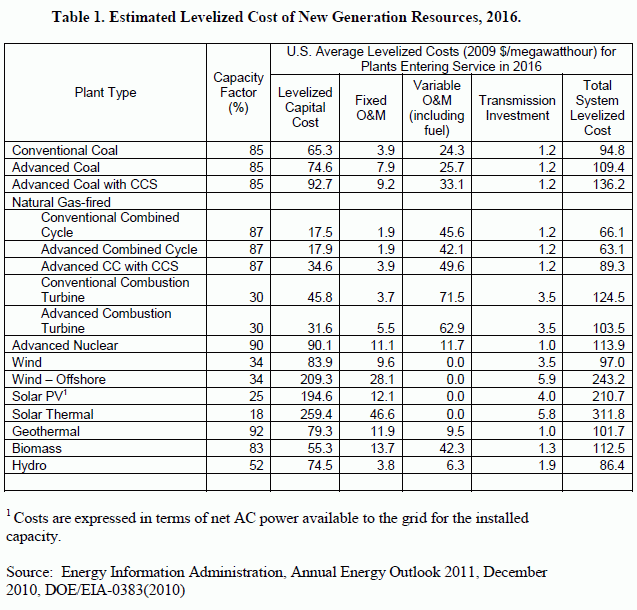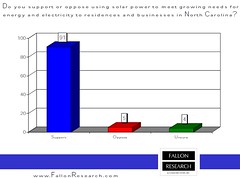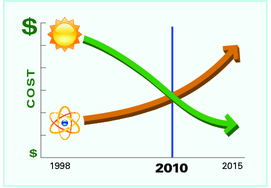According to the U.S. Department of Energy, here are the
current costs of coal, natural gas, nuclear, wind (onshore and offshore),
solar (electrical and hot water), geothermal, biomass, and hydroelectric:

Here’s a four page explanation of that table.
Coal is not the cheapest: natural gas is.
Onshore wind actually costs about the same as coal, and less than nuclear.
Offshore wind is currently about 2.5 times more expensive.
Solar photovoltaic (PV) currently costs a bit more than twice as much as coal,
and already less than offshore wind.
The table does not take into account the environmental costs
of the various power sources, or obviously coal would fare far worse,
and biomass would not be rated anywhere near as good as wind.
Remember, the cost of solar is
falling rapidly,
so solar will rapidly become more cost-effective compared to other
energy sources.
-jsq
 Chuck Eaton, Georgia Public Service Commissioner,
moderating a panel of Georgia’s Policy Makers at
Southern Solar Summit
said
Chuck Eaton, Georgia Public Service Commissioner,
moderating a panel of Georgia’s Policy Makers at
Southern Solar Summit
said








